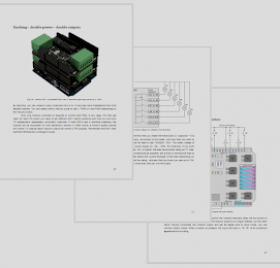FAQ
Most frequent questions and answers
No, it can be supplied only with DC Voltage from 6.5V to 32V. AC sources (Like 110V or 230V) will burn Shield instantly.
Yes, absolutely, because of used MOSFET semiconductors. No mechanical relays at all.
Yes of course. Reliable components and spring loaded input/output terminals (Phoenix contacts) and professional headers too were used.
Yes, it has well prepared manual with examples. Dozen integrated protections (if you would connect something wrong) also we support schools and technical colleges or universities - just write an email with short description to us.
Yes, you can, just you need to buy special adapter/bridge to Arduino UNO or NANO board.
It is easy as 123. Simplest code is LED Blink sketch. Just choose which one channel/output you want to control.
Yes. If you want to control PWM paralleled channels, you should make sure they work with same frequencies. Info can be found in concrete microcontroller’s board user manual.
Yes. Boards are tested with traceability and unique SN.
Why product price is higher comparing to an average?
Because: it has industrial quality, is certified, have dozens of protections, has full documentation with application examples, higher power and intended to be reused many times.
Sure, drive things in your smart house using Arduino WIFI or NANO WIFI boards or use external IoT shield.
Yes, single board can drive up to 6 different voltages between range DC 0...32V.
You can use up to 6 DC motors (with no direction control) and up to 3 DC motors (with direction control) or 1 unipolar stepper motor and 2 DC motors that run on DC 0…32V with one board.
Yes, by stacking 2 shields and using one controller you can control up 12 DC Motors or other devices.
It is tested to work with Arduino: UNO, MEGA, NANO pin compatible boards. Normally it will work with any microcontroller board with 3.3V or 5V voltage logic levels.
It is normal operation, because of inrush current and 10…20x bigger currents. Try to add 10’000µF (or bigger) capacitor onto input power supply voltage. If it won’t help, check your power supply (if it holds starting current without significand voltage drop).
Yes. Please see more details in user manual.
This is the protection that is mostly needed to control inductive loads. Switching (PWM) returns dangerous currents from the inductor and these currents detected and disconnect the outputs for 4 seconds. At the same time, the red LED on the board starts flashing and this signal is sent to the analog input A2 or A5.






